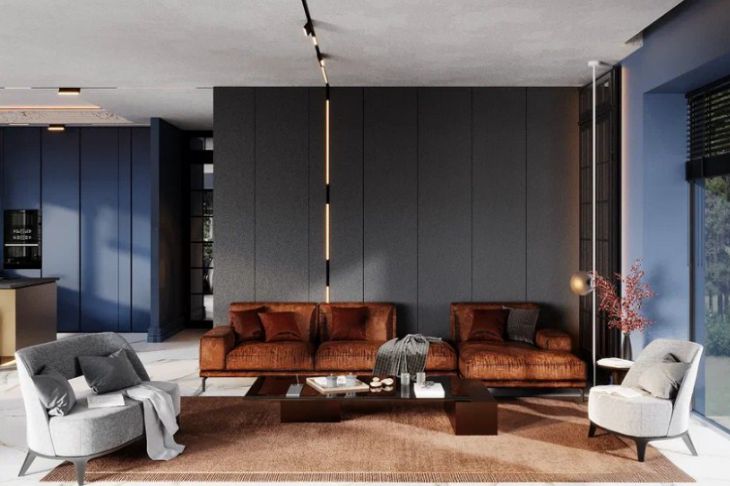Colors in your interior can control your mood like a TV remote control.
Some shades can lift your spirits, while others can calm you down or even irritate you.
Psychologists and designers have long studied the influence of the surrounding palette on human emotions and behavior. In this article, you will learn how different tones affect well-being and which ones are best to choose for your home.

Blue
It is often associated with peace and tranquility. It helps reduce stress, slows the heart rate, and promotes relaxation.
It is recommended to use it in the bedroom or bathroom. A study by the University of British Columbia showed that people in blue bedrooms sleep longer and better.
However, shades that are too dark can make you feel sad, so it’s best to choose light or medium tones.
Green
Green color reminds of nature and harmony. It relieves stress and improves concentration.
This shade is well suited for a study or living room where comfort and concentration are important.
Psychology Today magazine notes that people in rooms with green details suffer less from eye fatigue and headaches.
Yellow
Yellow color brings joy and energy. It stimulates creativity and lifts the mood.
This tone is appropriate in the kitchen or in a children's room, where there is a lot of movement and activity.
But bright yellow in large quantities can be irritating, so it is better to combine it with softer shades.
Red
Red symbolizes passion and strength. It increases adrenaline, speeds up the heartbeat and even increases appetite.
It is often used in dining rooms or living rooms to create a warm atmosphere. However, it is better not to use red in the bedroom, as it interferes with relaxation and sleep.
Grey
Gray is perceived as neutral and restrained. It gives a feeling of stability and calm, but in excess it can cause boredom or loneliness.
Gray is appropriate in offices or minimalist spaces where clean lines and shapes are important.
Violet
Purple is associated with luxury and inspiration. It awakens imagination and helps to find unusual solutions.
This shade is chosen for creative studios or meditation areas. But dark shades of purple are sometimes overwhelming, so they should be used in moderation.
White
White color represents purity and spaciousness. It visually enlarges the room and adds freshness. This tone is ideal for small rooms or places with a lack of light.
However, too much white risks making the space cold, so it is better to complement it with bright details.
Colors in the interior are more than just decoration. They directly affect your well-being and mood.
When choosing colors for your home, think about what kind of atmosphere you want to create.
Try different combinations, monitor your feelings and find the balance that will make your home cozy and pleasant to live in.








